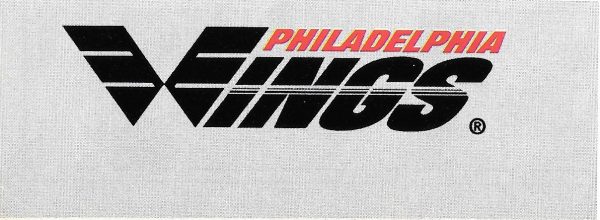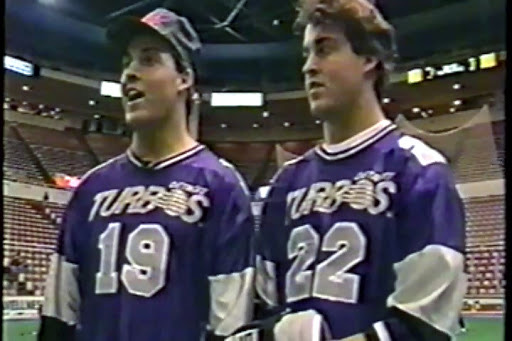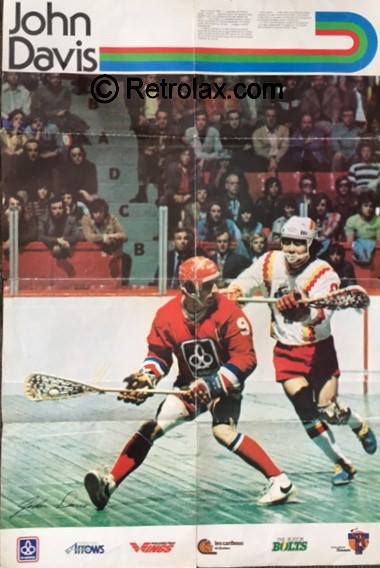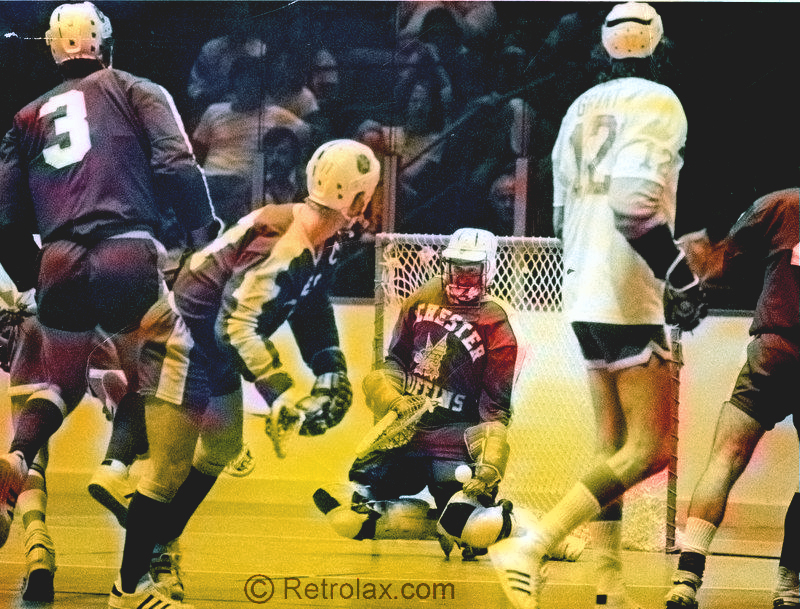By Tim Panaccio, Inquirer Staff Writer
Somewhere in America, there are two 4-foot-by-4-foot lacrosse nets that don’t belong there.
“We’re not sure where they are,” said Russ Cline, the president of the Major Indoor Lacrosse League, from his home in Kansas City yesterday.
Where they were supposed to have been was at the Spectrum for yesterday’s Philadelphia Wings-Detroit Turbos game.
Rather than cancel the game – which is what the Turbos originally wanted – the clubs agreed to use the Spectrum’s hockey nets, which are two feet wider. No announcement concerning the larger nets was made to the crowd of 15,204.
“I did not want to call attention to the nets,” Cline said.
The net result was a 21-19 victory that gave the Wings a 3-0 record. The game will count in the MILL standings, but should the Turbos (1-2) fail by one game to make the playoffs, the league will expand the playoffs from three teams to four.
That is, if the game isn’t replayed. Cline called a replay “a possibility,” but an unlikely one, given that arena dates are difficult to secure.
Either way, the Turbos were upset.
“We had more to lose than Philadelphia,” said Wayne Martinello, the Turbos’ general manager. “We play a defensive game, and with those hockey nets, they expanded the offense on us. We didn’t want to play, but Russ assured us we wouldn’t be penalized.”
Martinello said part of the problem was that some equipment stays with each team but that other equipment is pooled by the six teams. Cline theorized that the lacrosse nets used at the Spectrum, which are supposed to stay with the Wings, were inadvertently loaded onto a truck after the Wings’ Jan. 13 game with the Pittsburgh Bulls.
“There’s a lot of things I don’t understand about this league,” Martinello said. “This is still a young league. There are problems. I tell my guys to go out and have fun. Every game is an adventure.”
Mike French, the Wings’ general manager, said the club did not borrow nets locally because indoor nets are smaller than the outdoor ones used for college games.
The missing nets did little to improve the MILL’s credibility.
“We’ve got to put an asterisk next to this game and deal with it,” Cline said. “We’re embarrassed. This is the first time this has happened in our four years. It will be the last time it will happen, I assure you.”
Did the larger nets make a difference? Consider this: In the first 8 minutes, 40 seconds, 10 goals were scored against the top two goalies in the league – the Wings’ Dwight Maetche and Detroit’s Terry Sawicki.
“Terrible,” said Maetche, who plays hockey in the MILL’s off-season. ”The game shouldn’t count. A puck can only come from off the ice, whereas a lacrosse ball can come at you from anywhere.
“I feel bad for Detroit. They should replay this game.”
Wings coach Dave Evans called the game “bizzare” but defended counting it in the standings.
“The disadvantage was for both teams,” Evans said. “What I don’t understand is that we haven’t played a game here in three weeks, and at 10 a.m., they discover they don’t have the nets. Why?”
The larger nets helped eight players score at least three goals in the game. John Tucker, Mark Hahn and Brad Kotz scored three for the Wings, and Chris Flynn, a former all-American at Penn, scored four.
“Can you believe that?” Flynn said, when asked about the nets. “There’s no excuse for not having the right goals here. We bust our butts for this league.”
The Wings fell behind by 15-14 with 3:21 left in the third quarter, then pulled the game out with a seven-goal fourth quarter.
Should the Wings and Turbos finish in a first-place tie, all statistics from the game will be ignored, and the first-place team will be determined by the results of a seven-game season rather than an eight-game season.
(Philadelphia Inquirer, February 12, 1990)









